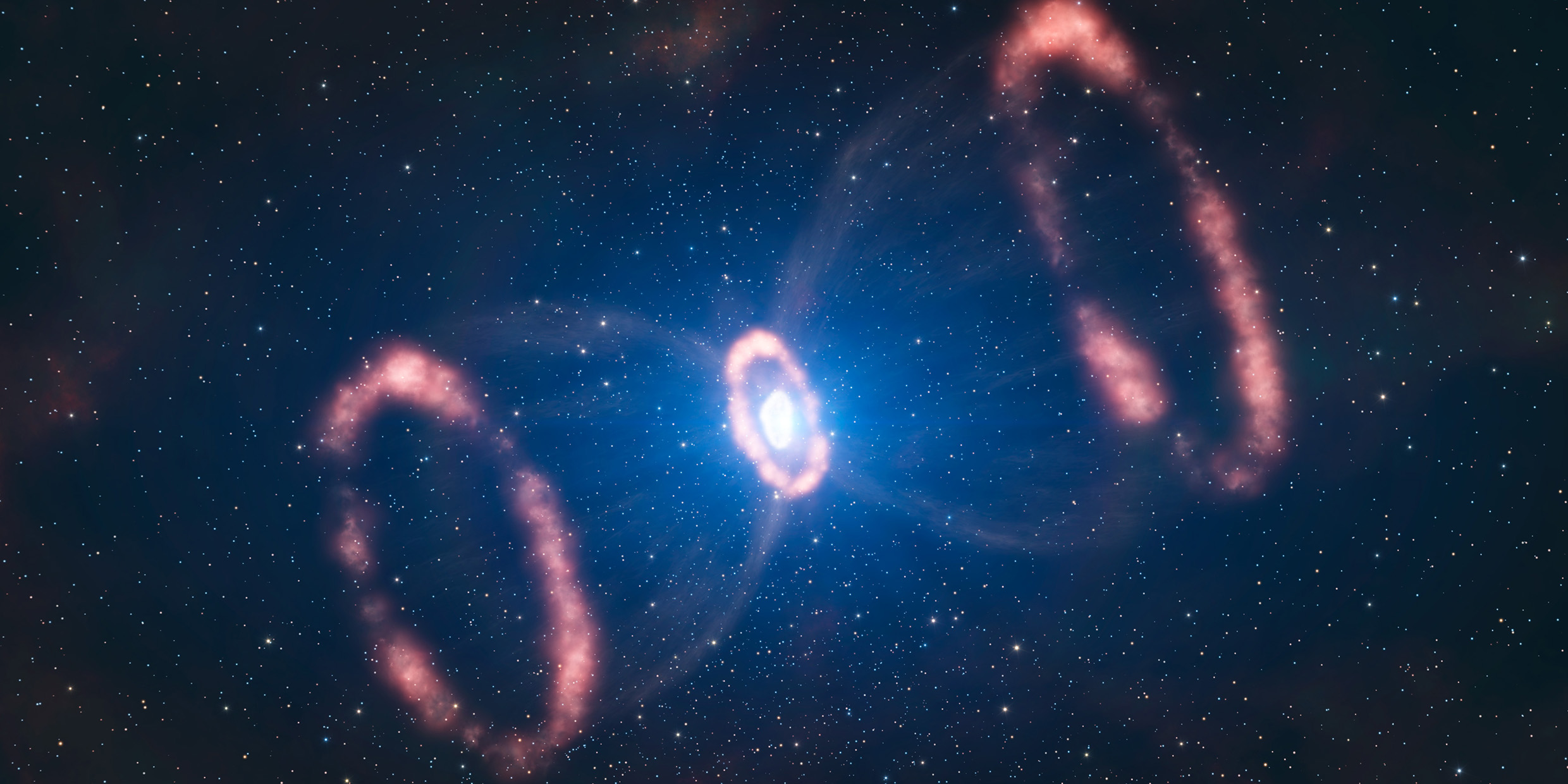Originally published 15 June 1987
The February [1987] supernova continues to shine brightly in southern skies. That exploding star is 160,000 light-years from Earth, in a companion galaxy of the Milky Way — and far enough away to pose no threat to us.
But what of the stars in our own neighborhood of space? Are any of them likely to “go supernova”? And what would be the effect on Earth?
If a star as close to Earth as 50 light-years exploded, we would be in trouble. The blast would sweep the Earth with a burst of gamma rays (days or weeks in duration), x‑rays, and a straggling wave of high energy cosmic rays moving at nearly the speed of light. Several thousand years later, a slower-moving shell of exploded debris would arrive, also carrying deadly radiation. The solar system would lie within that shell for hundreds of years. Life on Earth would suffer a terrible blow.
Within 50 light-years of the Earth there are approximately a thousand stars. The vast majority of those stars are smaller and less luminous than the sun, and according to present theories small stars are unlikely to die with a bang. Only a dozen stars in our 50 light-year neighborhood are larger and more luminous than the sun. To learn if one of them might die with violence it would be helpful to identify the star that blew up in February.
Australian astronomers Graeme White and David Malin believe the progenitor of the supernova was the star known as Sanduleak ‑69 202. Their evidence, presented in a recent [May 1987] issue of Nature, is based on careful measurements of photographic plates made before and after the appearance of the supernova, and on a determination of the probability (according to them, exceedingly small) that the progenitor star was a foreground or background star with nearly the same location as Sanduleak ‑69 202.
The candidates
Sanduleak ‑69 202 is a surprising candidate for a supernova. It is (or was) a hot blue supergiant star that had shown no previous variation in brightness. Astronomers believe that unstable red supergiant stars, like Betelgeuse in Orion, are more likely candidates for this type of supernova.
Perhaps the culprit star was a previously undetected binary companion of Sanduleak ‑69 202, the dimmer component of a double star system. A definite answer to the mystery will not be available until the light of the supernova fades sufficiently for astronomers to make a close study of that part of the sky.
If the progenitor star can be identified with certainty, it will enormously improve our understanding of why it is that some stars die violently. And it will give us our best information yet about what kind of star is likely to blow up.
Of the stars in our 50 light-year neighborhood, Vega is most like Sanduleak ‑69 202. But Vega is a much smaller star than Sanduleak ‑69 202, less hot, and several thousand times less bright. Hot supergiants like Sanduleak ‑69 202 live only for a few million years; Vega will live a thousand times longer, and — if we understand these things rightly — it will die sedately. Vega is an unlikely candidate for supernova.
Arcturus, Capella, and Pollux are approaching the end of their lives, and have cooled and swollen to become orange giants, but they are not the kind of massive supergiants that are expected to die violently. In fact, there are no nearby supergiants, hot or cool. All things considered, our neighborhood seems a safe place to be.
Keep your eye on Rigel
But neighborhoods change. Stars have independent motions in space, and over millions of years some of our stellar neighbors will move away and others will take their place. Meanwhile, the Sun itself is traveling through the galaxy. All of this moving about complicates any attempt to estimate the chance of a nearby cataclysm. A reasonable guess is that a supernova might occur within 50 light-years of Earth about once every few hundred million years.
If you want to wait and watch for a supernova, keep your eye on the familiar star Rigel in the constellation Orion. It is a star similar to Sanduleak ‑69 202. Rigel is a hot supergiant at that stage in its life when the balance of gravity and energy production can go dangerously askew. But Rigel is also at a reasonably safe distance from Earth – about 900 light-years away. There are 5 million stars closer than Rigel, all smaller, which suggests how rare good supernova candidates actually are.
Nevertheless, Rigel is 180 times closer than Sanduleak ‑69 202, or whatever star it was that blew up in February. If Rigel goes supernova, it will become as bright as the moon. On an otherwise dark night, you could read a book by its light. It will be the most spectacular celestial event in recorded human history.



